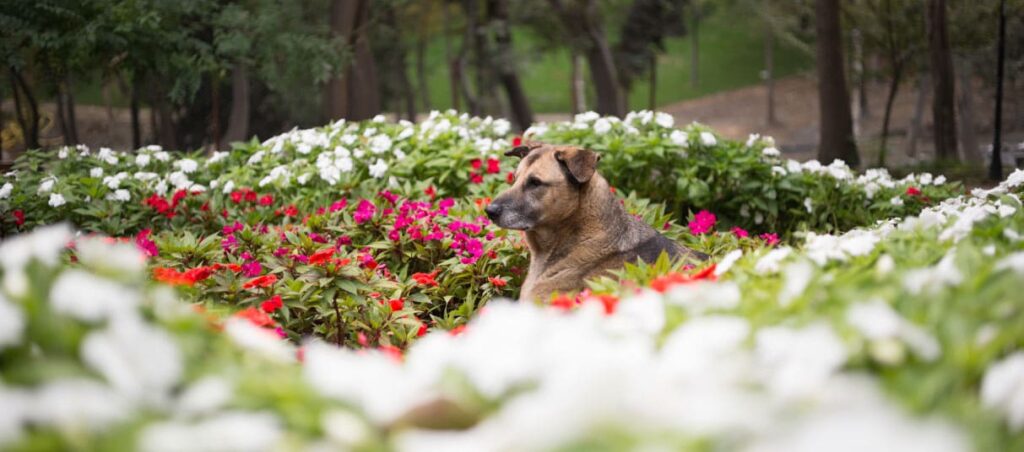Botanical Harmony and Ecological Wisdom
Imagine stepping into a vibrant oasis where the warm sun bathes a stunning landscape, and every leaf and petal shares stories of nature’s resilience and beauty. This is more than a guide — it’s a journey through the Eastern Cape’s incredible botanical landscapes, offering a grounded approach to pet-safe gardens that celebrate our country’s extraordinary ecological diversity.

Understanding the Botanical Diversity of the Eastern Cape
The Eastern Cape is a diverse South African province featuring various ecosystems, including coastlines, grasslands, and mountains. It hosts numerous endemic plant species and unique flora like fynbos and succulent Karoo. The region is also home to endangered wildlife, such as the African penguin and black rhinoceros, with conservation areas like Addo Elephant National Park safeguarding these species.
Additionally, the province’s biodiversity provides vital ecosystem services, making it essential for South Africa’s overall biodiversity and suitable for ecologically significant gardens that highlight its natural heritage.
Thematic Garden Design Approaches
- Karoo Desert Retreat Garden – Xeriscaping principles with minimal water requirements, textural plant combinations, and rocky landscape integration.
- Fynbos Coastal Sanctuary – Mediterranean climate with a pollinator-friendly layout, textural plant diversity, and windbreak considerations.
- Savanna Woodland Retreat – Wildlife corridor simulation with layered vegetation zones and tree canopy integration.
Ecological Design Principles
1. Create Multi-Layered Garden Ecosystems
- Use plants of varying heights and types to create habitats.
- Prioritize native species that support local wildlife.
- Use vertical gardening for added biodiversity.
2. Support Local Wildlife Interactions
- Install birdhouses, bat boxes, and insect hotels.
- Include water features to attract wildlife.
3. Promote Genetic Diversity
- Plant heirloom or open-pollinated flowers and vegetables.
- Create or contribute to seed banks.
4. Develop Habitat Corridors
- Protect natural green corridors.
- Use native hedgerows to link fragmented spaces.
Pet-Safe Indigenous Plants Ideal for the Eastern Cape
Legend: ✅ Completely Pet-Safe | ❌ Toxic to Pets | ⚠️ Use with Caution
Tree Species
- Wild Olive (Olea europaea subsp. africana) ✅
- Non-toxic, evergreen, drought-resistant, wildlife-friendly.
- Yellowwood (Podocarpus latifolius) ❌
- Toxic if ingested; national tree of South Africa.
- Sneezewood (Ptaeroxylon obliquum) ❌
- Contains toxic compounds; avoid in pet areas.
- Cape Beech (Rapanea melanophloeos) ✅
- Non-toxic, attracts birds, suitable for shaded areas.
- White Stinkwood (Celtis africana) ⚠️
- Possibly mildly toxic; monitor pet interaction.
Shrub Species
- Cape Honeysuckle (Tecoma capensis) ✅
- Safe for pets, vibrant flowers, attracts sunbirds.
- Wild Dagga (Leonotis leonurus) ❌
- Toxic; avoid interaction with pets.
- Num-Num (Carissa macrocarpa) ❌
- Edible for humans, but toxic to pets.
- September Bush (Polygala myrtifolia) ✅
- Pet-safe and drought-tolerant.
- Wild Rosemary (Eriocephalus africanus) ⚠️
- Use with caution; may cause irritation.
Succulent Species
- Spekboom (Portulacaria afra) ✅
- Excellent carbon sequestration, pet-safe.
- Elephant’s Foot (Dioscorea elephantipes) ❌
- Toxic if consumed; decorative only.
- Pig’s Ear (Cotyledon orbiculata) ❌
- Toxic; avoid in pet areas.
Herbaceous Plants
- Wild Garlic (Tulbaghia violacea) ✅
- Pest-repellent, pet-safe, attracts pollinators.
- Lion’s Tail (Leonotis leonurus) ❌
- Can cause digestive upset; avoid.
- Wilde Als (Artemisia afra) ❌
- Medicinal for humans; not safe for pets.
Grass and Ground Covers
- Cape Reed (Restio spp.) ✅
- Safe, non-toxic, and low maintenance.
- Indigenous Grasses
- Generally safe, but best to consult a local expert.
Climbers and Creepers
- Cape Jasmine (Gardenia thunbergia) ❌
- Toxic to pets; avoid planting near pet zones.
- Wild Grape (Rhoicissus tomentosa) ✅
- Edible fruits and completely pet-safe.
Recommended Pet-Safe Plant Combo
- Wild Olive
- Cape Honeysuckle
- Spekboom
- Wild Garlic
- Cape Reed
- Wild Grape
Ecological Wisdom: Balancing pet safety with indigenous plant conservation requires careful, informed choices.
Practical Implementation Guidelines
- Water-Wise Landscaping
Use drought-tolerant indigenous plants and create water-retention features. - Natural Pest Control
Select naturally pest-repellent plants, attract predatory insects, and avoid harsh chemicals. - Sustainable Gardening
Use organic fertilisers, practise composting, and monitor ecosystem changes. - Technology and Ecological Tracking
Use plant ID apps, track biodiversity changes, and participate in citizen science.
Soil Microbiome Management
1. Encourage Mycorrhizal Networks
- Use cover crops, reduce soil disturbance, and add organic matter.
2. Enhance Nutrient Cycling
- Rotate crops, use slow-release organic fertilisers, and add compost teas.
3. Support Microbial Life
- Minimise pesticides and perform regular soil health checks.
Pet Safety Considerations
If you can’t redesign the entire garden, start with small safety zones:
1. Identify Toxic Plants
- Use guides or plant ID apps to flag dangerous species.
2. Create Pet Interaction Zones
- Fence off plant zones and monitor pet access.
3. Use Physical Barriers
- Install raised planters, mesh, or fencing to restrict access.
4. Provide Pet-Friendly Spaces
- Include safe plants, toys, and enrichment in pet areas.
Your Garden as a Living Ecosystem
Your pet-safe indigenous garden is more than an outdoor space — it’s a celebration of South Africa’s natural beauty and a sanctuary for both pets and pollinators. Each plant choice you make contributes to biodiversity, ecological resilience, and your pet’s well-being.
Expert Tip: Every plant is a small act of conservation. Build a garden that’s both beautiful and beneficial.
Disclaimer
This is a general guide. Always:
- Consult a veterinarian before introducing new plants.
- Watch how your pets interact with greenery.
- Avoid overconsumption of any plant.
- Monitor for allergic reactions.